Sabudana Vada (Fried Dumplings of Potatoes and Tapioca)

Sabudana Vada is a delicious snack with a great texture. It is crunchy on the outside and soft inside. This can satisfy just about anybody, even those on a gluten-free diet. This recipe is completely gluten free.
Ingredients
- 3 medium potatoes
- 1/3 cup tapioca (sabudana)
- teaspoon salt adjust to taste(namak)
- 1 teaspoon cumin seeds (jeera)
- 1 finely chopped green chili adjust to taste
- Approximately 2 tablespoons finely chopped cilantro (hara dhania)
- 1 teaspoon lemon juice
- Oil to fry
Method
Wash the tapioca and soak it in 3 cups of water for 3 to 4 hours.
Drain the water. After soaking, the tapioca will have increased in volume, by about 2 times. Set aside.
Par-boil the potatoes, so they are only half-cooked. Insert a knife into the potato to ensure that it is still somewhat firm.
Cool the potatoes, then peel and grate them using a vegetable grater.
Mix all the ingredients together. The dough will be a little sticky and soft in consistency.
Divide the potato dough into 16 parts.
Roll each one into a smooth patty. You will need to lightly oil your palms to prevent the dough from sticking.
Heat the oil in a frying pan on medium high heat. There should be at least 1½ inches of oil in the frying pan. To check if the oil is ready, drop a small piece of dough into the oil. The dough should rise to the surface, and not change its color immediately.
Slowly drop the patties into the frying pan.
Fry the vada until both sides are golden brown. Turn them occasionally. It will take approx. 4 to 5 minutes to cook.
Remove the vada and place over a paper towel so the excess oil is absorbed.
Sabudana vada should be crunchy on the outside and soft inside.
Serve them as is or with cilantro or tamarind chutney.
Tip
The frying oil needs to be sufficiently hot, or else the Vadas will turn out greasy and may break into pieces while cooking.
Serving suggestions
- Sabudana Vadas are best served with cilantro chutney or tamarind chutney as a dip.
- Vadas taste best when they are served hot.
- Sabudana Vadas can be made one day in advance and stored at room temperature. Do not refrigerate. When ready to serve, place on a cookie sheet and heat in the oven at 300 degrees till warm.
Making Sabudana Vada: A Traditional Indian Snack
Sabudana Vada, a popular snack especially during Navaratri and Ganesh Chaturthi celebrations, is a gluten-free and vegan appetizer commonly enjoyed as a delightful treat during festivals like Krishna Janmashtami, offering a crunchy texture and savory flavor to those seeking gluten-free and vegan snack options. Sabudana Vada is a beloved snack in Indian cuisine, especially popular during festivals and fasting periods.
Sabudana vada is essentially fried dumplings made from potatoes and tapioca pearls. It's a delightful blend of flavors and textures, crispy on the outside and soft on the inside. This sabudana vada recipe is not only delicious but also relatively simple to make, requiring just a few basic ingredients commonly found in Indian households.
Let's delve into the process of how to make sabudana vada and explore some tips, variations, benefits, and frequently asked questions regarding this classic snack.
Tips for Perfect Sabudana Vada
- Soak Sabudana Properly: The key to making good sabudana vada lies in soaking the tapioca pearls properly. Rinse the sabudana under running water until the water runs clear, then soak them in water for at least 4-5 hours or overnight. They should be soaked enough to be easily mashed between your fingers.
- Use Boiled Potatoes: Ensure that the potatoes are boiled properly and mashed well. This helps bind the vada mixture together and prevents them from breaking apart during frying.
- Adjust Seasonings: Feel free to adjust the seasonings according to your taste preferences. You can add more green chilies for extra heat or increase the amount of lemon juice for a tangier flavor.
- Fry on Medium Heat: Fry the vadas on medium heat to ensure they cook evenly from inside out and develop a golden-brown crust on the outside.
- Serve Hot: Sabudana vadas are best enjoyed hot and fresh. Serve them with mint chutney, tamarind chutney, or yogurt for a delightful snack experience.
Variations of Sabudana Vada
- Sabudana Aloo Tikki: Instead of shaping the vada into traditional round patties, you can make them into tikki shapes for a twist. Flatten the mixture into small discs and fry until golden brown on both sides.
- Sabudana Vada with Peanuts: Add roasted and crushed peanuts to the vada mixture for an extra crunch and nutty flavor.
- Sweet Sabudana Vada: For a unique variation, add some sugar and grated coconut to the vada mixture to make sweet sabudana vadas. Serve them as a dessert or a sweet snack.
- Baked Sabudana Vada: If you're looking for a healthier alternative, you can bake the vadas instead of frying them. Simply brush them with oil and bake in a preheated oven until golden brown and crispy.
Benefits of Sabudana Vada
- Rich in Carbohydrates: Sabudana, being made from tapioca pearls, is rich in carbohydrates, providing a quick source of energy.
- Gluten-Free: Since sabudana is derived from tapioca, it is naturally gluten-free, making it suitable for those with gluten intolerance or celiac disease.
- Good Source of Protein: Potatoes used in the vada mixture add a decent amount of protein to the snack, making it more satiating.
- Easy to Digest: Sabudana is easy to digest, which makes it a popular choice during fasting periods when heavier foods are avoided.
FAQs about Sabudana Vada
-
Can I make sabudana vada ahead of time?
- While sabudana vada is best enjoyed fresh, you can prepare the mixture ahead of time and refrigerate it. Fry the vadas just before serving for the best taste and texture.
-
Can I freeze sabudana vada?
- Yes, you can freeze uncooked sabudana vada. Place them on a tray lined with parchment paper and freeze until firm, then transfer them to a freezer-safe bag or container. Fry them directly from frozen, adding a few extra minutes to the frying time.
-
What can I serve with sabudana vada?
- Sabudana vada pairs well with various chutneys such as mint chutney, tamarind chutney, or yogurt. You can also enjoy them with a hot cup of masala chai for a perfect snack time treat.
For more mouthwatering recipes and culinary inspiration, explore the following links from Manjula's Kitchen:
Crispy Spinach Pakoras, Vegetable Biryani, Paneer Tikka Masala, Vegetable Pakoras Recipe, Baingan Bharta (Roasted Eggplant) Recipe & Matar (Green Peas) Paneer Recipe
Dive into the world of authentic Indian cuisine and elevate your cooking skills with these delightful recipes.
Comments
Leave a CommentComment policy: We love comments and appreciate the time that readers spend to share ideas and give feedback. However, all comments are manually moderated and those deemed to be spam or solely promotional will be deleted.
Leave a Reply
You must be logged in to post a comment.

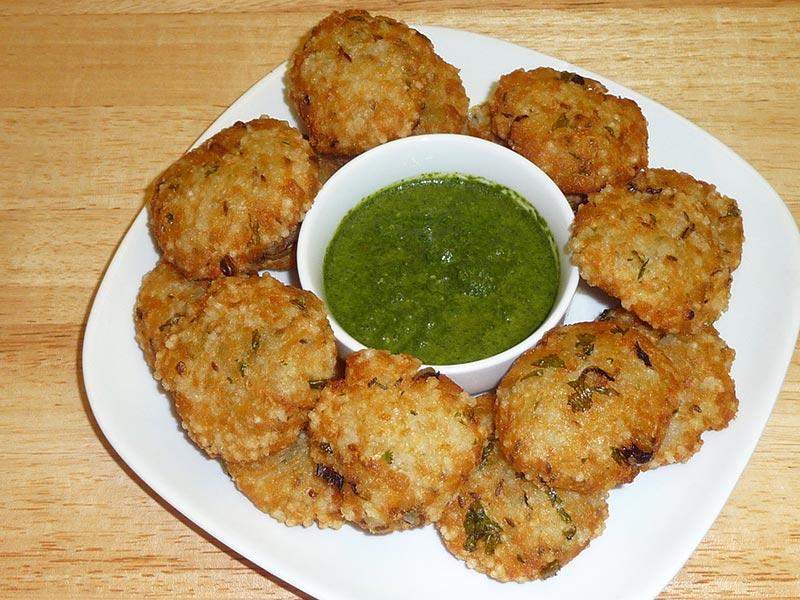
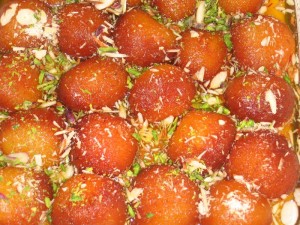
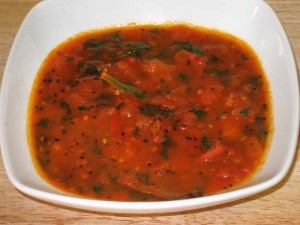
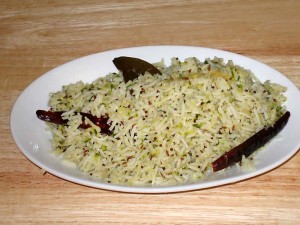
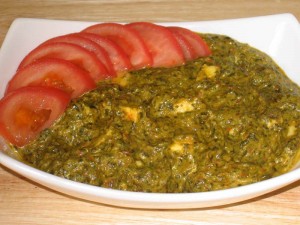
Mita
January 24, 2017 at 3:17 pmThese are delicious! I frylite them on both side and baked them. Slightly healthy take
Chetna Chauhan
December 12, 2016 at 9:42 amVery good recipes manjulaji…thank you for all recipies..
avni talreja
June 4, 2015 at 4:23 amKya mein sirf 2 hr k bd gale huye sabudane use kr skti hu….???
Coz mere ps 2 hr se jyada time nhi haii…..
Kya karu
Ritu
February 27, 2015 at 8:38 pmhi Manjula ji,
Can we make these Vedas out of left over sabudaana khichdi? Kindly suggest
Ritu
February 27, 2015 at 8:35 pmhi Manjula ji,
Can we make these Vedas out of left over sabudaana khichdi?
Manjula Jain
February 27, 2015 at 8:41 pmRitu, I have never cooked with left over but it should work do add potatoes
Manjula Jain
February 27, 2015 at 8:41 pmRitu, I have never cooked with left over but it should work do add potatoes
kaajal Madaan
February 27, 2015 at 7:51 pmNameste Manjula ji !
I am living in NewYork & I like ur all recipies. Plz tell me how we make malai kofta ?
Manjula Jain
February 27, 2015 at 8:41 pmKaajal,check out the recipe on my web site here is the link https://manjulalive.wpenginepowered.com/2008/08/12/malai-kofta/
Anjali
February 27, 2015 at 5:27 pmManjulaji,
Is it possible to add chopped onions for more taste or these are best without onions. Please advise.
sfaraz
September 24, 2014 at 11:37 amcan we freeze
akshaya.rameshh
February 5, 2014 at 4:56 amhi mam,
am trying all your recipes and it comes out well…looking forward for more…..while frying this vada it started breaking for me…what should i do for it…….
Mahima
January 24, 2014 at 11:33 amHi Manjulaji,
Thank you for the recipe.
Tried this recipe today, but when the frying is done all the contents from inside the sabudana vada comes out. Any solution for this?
Thanks,
Mahima
Manjula Jain
January 24, 2014 at 12:09 pmMahima,
Mixture should be firm, make sure you have drained the sabudana well and potatoes are not very soft.
Cibele
September 18, 2012 at 10:31 amDear Manjulaji,
Thank you so much for sharing this recipe!!
I am in love with these vadas. I have an Indian friend here who does delicious ones. Here in Brazil we are used only to sweet tapioca, it was the first time I had it spicy, and it is so good!!! Now with your help I’ll try doing it myself. Absolutely *wonderful*!!! : )
Realitybites
March 20, 2012 at 9:47 amHow long can I store these for after frying them? How many days are they good for?
Manjula Jain
March 20, 2012 at 3:56 pmRealitybites,
Vadas are supposed to be eaten just after cooking, as they get cold they will be soft you can reheat on hot skillet and they will be ok but not as good and crispy.
sheikh ahmed
February 1, 2012 at 5:35 pmi like indian food. is very tasty my all family like every food. Manjulas is very nice make the food.thanks
Michele
September 25, 2011 at 8:23 amMy first few turned out great. After that mine broke up in the oil as well.
Manjula Jain
September 25, 2011 at 8:33 amMichele,
Oil was not hot
GOURISANKAR S
July 23, 2011 at 6:59 pmManjula’s kitchen is A true miror of indian receipies.the dishes are amazaing.Me and my wife always try some which always go well.As the receipies are nicely presented.Thanks Manjula kitchen.
Sha
July 18, 2011 at 12:23 amHello madam
I tried this recipe, everything wents on well till i start frying… all broken in the wok.. Can i know wats the reason? Thanks
R
August 25, 2011 at 9:56 amMay be you had more water content – example, the potatoes boiled more or too much water in sabudana? Or if you turn it over too soon, then also they will break. Manjulaji has talked about them in the video.
Michele
September 25, 2011 at 8:24 amMe, too.
aneeqa
April 15, 2011 at 4:30 amnice
i tried it today went very well
Akshatha
February 28, 2011 at 4:41 amAwesome recipe, thanks a lot Manjula mam. I love the crisp and soft balance in this recipe. Sabudana gives a whole different dimension to the potatoes.
Suja
January 9, 2011 at 8:05 amHello Manjulaji, thanks so much for all your wonderful recipes.Can you please tell me how long you cook the 3 medium potatoes for? Did you do them in the microwave or on in the pressure cooker? Can you please share the method and time? Thanks much!
Akshatha
February 28, 2011 at 4:36 amHi Suja,
I use a Microwave for cooking potatoes. For this recipe since the potatoes should be firm and not over boiled I cook for 15 minutes. My microwave is 750W and I use Medium High setting (last but one) and not High setting (last). You can always pause, check the potatoes with a knife or fork and cook for more time as required if you are using a microwave. You can’t do the same as easily with a cooker cuz it takes time for the pressure to build before it starts cooking, then the pressure to release after you have turned off the heat.
Cheers,
Akshatha
DHendrickson
December 20, 2010 at 3:53 pmYesterday was our company xmas party and i made this recipe. it was a hit everybody loves it. and the cilantro chutney as well. thanks for this recipe.
kslibi
December 1, 2010 at 7:12 pmWe made these for the first night of Chaunkah this year! So delicious, thank you, Manjula! We try to eat gluten-free as much as possible, so these worked well. I think I par-boiled my potato a little bit too much, but they were still excellent. We are in very RURAL America and no chutneys in sight, but spicy mustard was good too. (Yikes! I hope that’s not an offense! 😉 Nice change from the usual latke. 😀
Julia
November 28, 2010 at 2:55 pmhi Manjula
What kind of oil do you prefer for frying? The oil looks very clear and clean – wondering what it is.
Thanks for website – so interesting and helpful!
Manjula Jain
November 28, 2010 at 5:04 pmJulia, I use canola oil.
santoshbangar
November 22, 2010 at 2:08 amhi tempting crispy vada i add roasted crushed groundnut in ths vada
1st time here u have wonderful blog with many different ideas and events i also need ur help to make my blog sucessful
do visit
Jaya
November 21, 2010 at 5:53 amCan this recipe be made with the regular tapioca bought in American grocery stores?
Manjula Jain
November 21, 2010 at 1:38 pmJaya, Yes I have made both ways.
Aarti
November 20, 2010 at 11:39 amThanks Manjulaji for the wonderful recipe.
I generally make these for vrata and it generally came out quite soft from inside. So I added my own variation of adding equal quantities of potatoes, raw bananas and arbis. like in this recipe -1 medium potato, 1 raw banana and two small arbis. this made the vadas really crisp. arbi helped making the outer crust more crispy while raw banana helped making the inside more compact.
Manjula Jain
November 20, 2010 at 12:25 pmAarti,
Thank you, for nice suggestions.
Mazee Africa
November 20, 2010 at 5:49 amHi Bhabhi,
I tried to cook but they keep breaking what’s gone wrong please help bye.
Manjula Jain
November 20, 2010 at 12:24 pmMazee,
Need to fry on high heat or potatoes must be wet.
Divya Vikram
November 17, 2010 at 12:26 pmDelicious quick vada!
Eva
November 16, 2010 at 6:12 pmThese dumplings are really delicious looking! I’m curious about the tapioca balls in them. I’m can’t wait to try this recipe 🙂
ada_fm
November 16, 2010 at 2:09 pmThis looks delicious!
I’ll try to do it!!!
Best wishes from Barcelona!
Ada_fm
anita
November 16, 2010 at 12:23 pmhi manjulaji,
I have become fan of your recipes.I have tried few of them till now they turn out to be excellent.Best thing is gravies are without onions.
Please keep up the good work.
For sabudana vada My tapoica are bigger in size as compared to yours Will they work too?
anita
Manjula Jain
November 16, 2010 at 12:59 pmAnita,
That should work the same.